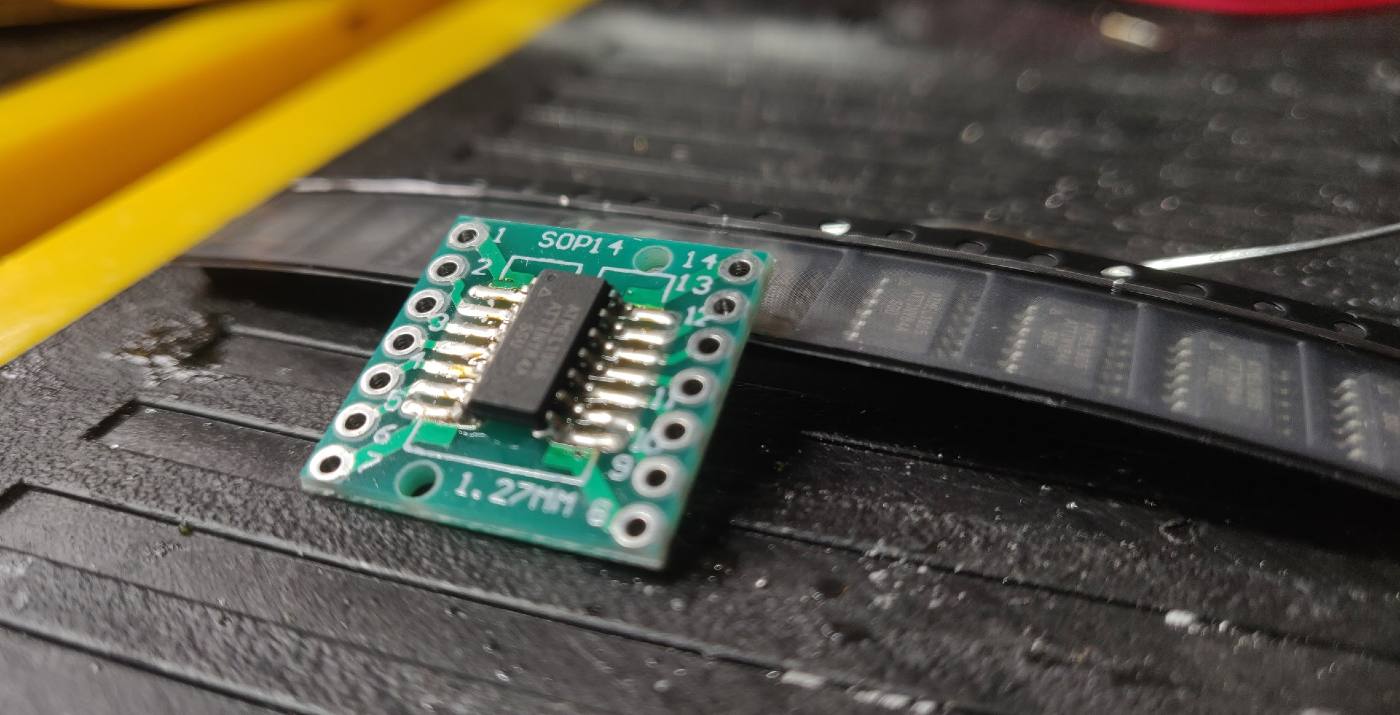Soldering tiny (SOIC/SO) surface mount ICs in DIY projects
You can use any SOIC chip in your DIY project without any special equipment. All you need is a cheap breakout PCB and regular soldering iron!

Intro
Recently, I've had some ideas for projects that required some kind of IC (Integrated Circuit) chip that seemed to only be available in surface mount form. I was really intimidated by this, and figured it meant that I couldn't use it in my project unless I had a custom PCB made with it already attached, or had some kind of special soldering station.
I decided to just order the ICs I wanted and figure it out from there. To my surprise, it was really not so hard to do, and now my world has been opened up to thousands of little chips that only come in surface mount form factor.
Here is an example of one that is available in a more DIY-friendly form-factor, the Attiny84. I found these in SMD form factor for very cheap (under $1/piece) on Aliexpress, so I decided to go for it:
SOIC Attiny84 MicrocontrollerWhat are Surface Mount (SMD) ICs?
The first thing to learn to really understand what I we're dealing with with these tiny chips is about IC form factors, which you'll see in datasheets usually as "packaging type" or "package type." There is a great Wikipedia article on this.
This article refers to small outline ICs, aka SO (small outline) or SOIC (small outline integrated circuit). I found these to be extremely common and there seem to be breakout boards readily available, so this article refers to this form factor. You can filter by this package size when searching for an IC on a site like Mouser or Digikey.
SMD IC Breakout Boards
I was really pleased to learn that there are cheap, well-made adapter/breakout boards exactly for this purpose. I ordered this set on Amazon as it had a bunch of different pin layout boards and was "reversible," with SOIC on one side and TSSOP (another package type) on the other side. I only tried out SOIC chips so far and TSSOP is even smaller.
Check the reviews on these boards for an indication of the quality and features. If you know you'll need a particular pin layout, you can get a set like this one with 25pcs of 8 pin layout, so it will be even cheaper per-board.
Holding the breakout board down with some electrical tapeSoldering the ICs to the boards
I thought that soldering these ICs would be really difficult, but it really was much easier than I expected. Here are a few tips:
- Hold down the pcb with tape, as sudden movements can move the little IC out of position
- Add some flux to the traces and place the IC on top
- Position the IC as aligned as possible and solder one corner pin. Even if it isn't 100% straight, you should be able to fix the orientation a bit
- Move on to the opposite corner
- Now the IC should be firmly in place and you can apply solder to the rest of the pins
The biggest surprise for me was how easily the pins suck up the solder with a little bit of flux. I used this liquid flux applied with a syringe. I would recommend using flux for this type of solder.
Surface Mount Chips soldered using a regular soldering ironI hope this inspires any other beginners who were wondering whether they could use SMD ICs in their DIY project. This was my first attempt at soldering them, and I definitely have room to improve.
Please note that I only link products that I have bought and tested myself, and some of the links above are Amazon affiliate links, which I earn a commission from (at no additional cost to the buyer).
Thanks and good luck with your own attempt!
